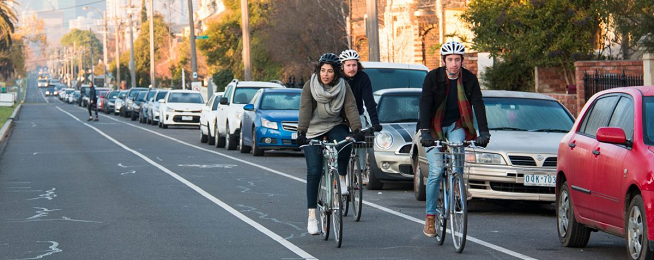Bike lanes have copped a fair bit of negative press in the past due to their perceived impact on traffic congestion, car parking and delivery vehicles access.
But a new University of Sydney study has found that drivers’ understanding of how bike lanes impact traffic speed differs depending on which country they live in.
Professor John Nelson and researcher Miguel Loyola from the Institute of Transport and Logistics interviewed more than 1500 drivers in Australia, the Netherlands and the United Kingdom (UK).
They showed drivers pictures of streets with and without cycle lanes and asked them to estimate the speed limits on each street.
The Netherlands has a speed limit of 30 km/h in residential areas while Australia and the UK have 50 km/h, although more UK streets are lowering their speed limits.
The outcome was that UK and Australian drivers thought cycle lanes would mean lower speed limits than on streets without the lanes while the Dutch drivers didn’t think they’d make a difference.
Some Dutch drivers thought the cycles lanes would help them drive faster because of the separation.
This contrasts with Australian drivers who believe lower speed limits will lengthen their journey, despite research which shows travel times are only marginally increased.
The authors surmised that the misperception of the impact of cycle lanes and lower speed limits may be behind some of the opposition to cycling infrastructure in Australia and the UK.
Why does speed matter?
Crash research shows that the risk of serious injury and death for people walking and riding decreases with speed limits.
Many Australian local streets dropped their speed limits from 60 km/h to 50 km/h several years ago. However, the risk of surviving if you are hit by a car travelling at 50 km/h while you are walking, or riding is only 10 % compared to the 90% chance if you are hit at 30 km/h.
Encouraging people to drive at slower speeds on streets with people walking and riding can also reduce the risk of a crash occurring because their peripheral vision is improved.
Bicycle Network supports 30 km/h speed limits on local streets without separated cycling infrastructure and continues to lobby governments at local and state levels to implement safer speeds.
This article was made possible by the support of Bicycle Network's members who enable us to make bike riding better in Australia.
Become our friend
Find out more about Bicycle Network and support us in making it easier for people to ride bikes.


